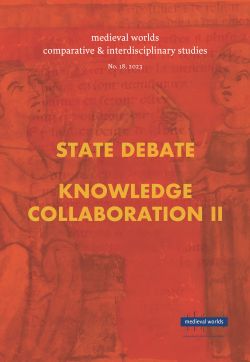
medieval worlds • no. 18 • 2023, pp. 246-270, 2023/07/03

In this article, I identify some of the challenges of labeling religious affiliation in a medieval Arabic biographical text. I further propose a solution for characterizing such affiliations in a network or database while preserving the nuances and uncertainties of primary-source evidence. The goal of the »Communities of Knowledge« project was to observe cross-communal interactions in scholarly circles as represented in the History of Physicians by Ibn Abī Uṣaybiʿa (b. after 590 AH/1194 CE, d. 668/1269 or 1270). The network analysis at the core of the project’s large-scale view of these interactions presupposed linking hundreds or even thousands of individuals mentioned in the text to their various religious communities. Fundamentally, this linking involves two steps: (1) inferring an individual’s religious affiliation from the text and (2) making this inference accessible to the network analysis in the recording system. Both steps raise challenges. At the inference step, the concepts of religion and group adherence must be contextualized in Ibn Abī Uṣaybiʿa’s text. Here I explore his explicit, implicit, and ambiguous references to affiliation. At the recording step, a labeling system should allow varying levels of precision for the affiliation, should show the type and certainty of the »signal« (the evidence for inferring the affiliation), and should record multiple signals of a person’s affiliation where present, even if these appear contradictory. The model I propose with TEI-XML examples makes multiple signals and their attributes machine-actionable. Finally, I consider how this model relates to the possibility of machine labeling affiliations with named entity recognition (NER). Arabic NER models do not currently include entity types for religious affiliation, but the tagged text of the History of Physicians could help to train NER models on the nuances of religious affiliation in medieval Arabic texts.
Keywords: religion and religious identity, interreligious relations, Near East/Middle East, digital humanities, Arabic onomastics, Abrahamic religions, Abbasid caliphate (132-656 AH/750-1258 CE), Arabic, biographical literature, Ibn Abī Uṣaybiʿa (b. after 590 AH/1194 CE, d. 668/1269 or 1270), network analysis, TEI-XML, named entity recognition (NER)